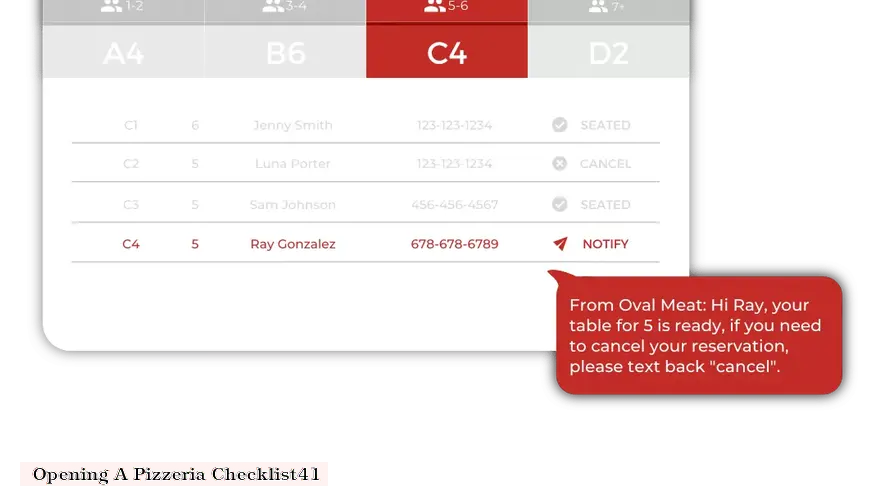

Opening a pizzeria can be an exciting venture, but it's important to make sure you have all your bases covered before diving in. Here's a checklist to help you get started:
1. Conduct Market Research:
Understand the local market, including demographics, competition, and consumer preferences. Identify gaps in the market that your pizzeria can fill.
2. Develop a Business Plan:
Create a comprehensive business plan that outlines your pizzeria's goals, target audience, marketing strategies, financial projections, and staffing requirements.
3. Choose a Location:
Find a location that is easily accessible to your target audience and meets local zoning regulations. Ensure that your restaurant is wheelchair accessible and has ample parking.
4. Obtain Financing:
Explore different financing options, such as loans, investors, or crowdfunding. Create a financial plan that includes startup costs, operating expenses, and revenue projections.
5. Obtain Licenses and Permits:
Research and obtain all necessary licenses and permits required by your state, county, and local government. These may include a food service permit, alcohol license, and music license.
6. Hire Staff:
Develop a strong team by hiring experienced staff, including pizza makers, cooks, servers, bartenders, and management. Provide thorough training on customer service, food preparation, and safety procedures.
7. Design and Build Out Your Space:
Work with an architect or designer to create a functional and inviting space that reflects your pizzeria's brand. Ensure that your restaurant meets all health and safety codes.
8. Choose Your Menu:
Develop a menu that offers a variety of delicious pizzas, appetizers, salads, and desserts. Consider sourcing high-quality ingredients from local suppliers.
9. Select Your POS System:
Invest in a reliable point-of-sale (POS) system that can handle orders, payments, and inventory management. Ensure that your POS system integrates with your online ordering and delivery platforms.
10. Establish Marketing Strategies:
Create a strong online presence through social media, email marketing, and a website. Consider partnering with local organizations and schools to promote your pizzeria.
11. Purchase Equipment and Supplies:
Invest in high-quality pizza-making equipment, including mixers, ovens, and dough cutters. Source affordable and durable supplies, such as pizza boxes, napkins, and utensils.
12. Prepare for Opening Day:
Conduct a soft opening to test your operations, service, and menu. Use feedback from friends and family to make adjustments before your official opening.
13. Launch Your Online Presence:
Create a website, social media accounts, and online ordering platforms to reach a wider audience. Consider partnering with food delivery services to increase your customer base.
14. Plan for Inventory Management:
Establish relationships with reliable suppliers for your ingredients and inventory management. Implement a system for tracking inventory, scheduling deliveries, and managing waste.
15. Set Up Accounting and Payroll Systems:
Choose an accounting software that can handle inventory management, payroll, and taxes. Ensure that your payroll system complies with local labor laws.
By following this checklist, you'll be well on your way to opening a successful pizzeria that will delight your customers and keep them coming back for more. Buon appetito!
DISCLAIMER: This information is provided for general informational purposes only, and publication does not constitute an endorsement. Kwick365 does not warrant the accuracy or completeness of any information, text, graphics, links, or other items contained within this content. Kwick365 does not guarantee you will achieve any specific results if you follow any advice herein. It may be advisable for you to consult with a professional such as a lawyer, accountant, or business advisor for advice specific to your situation.
today
Copyright © 2025 Kwick365.com
Designed by KwickPOS is the best restaurant POS